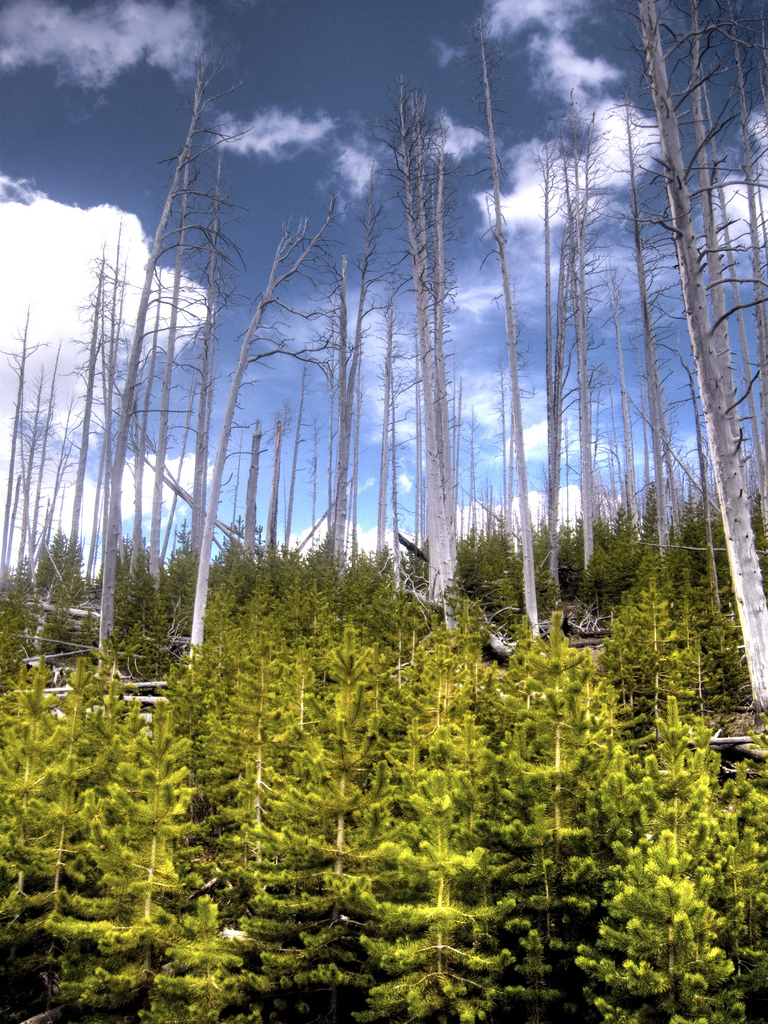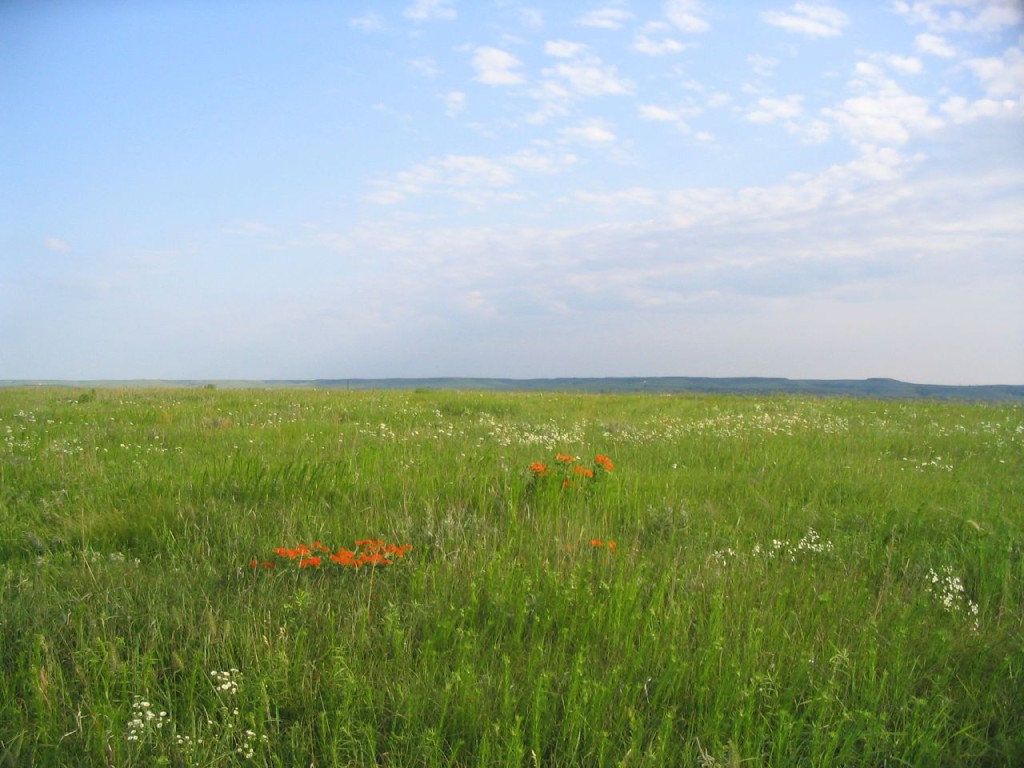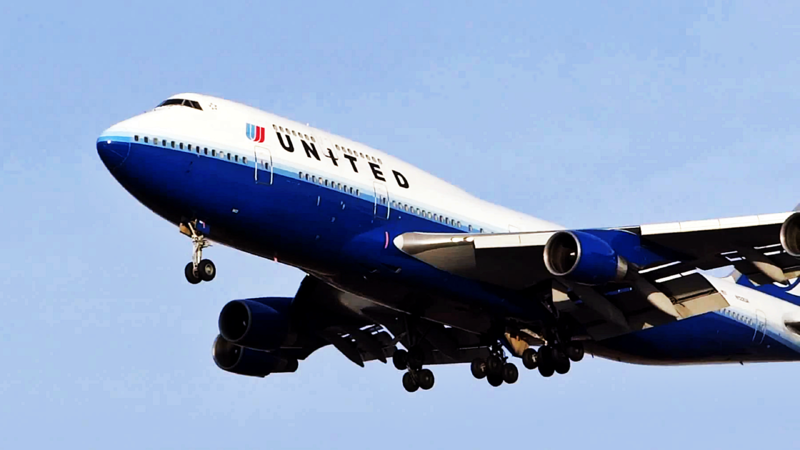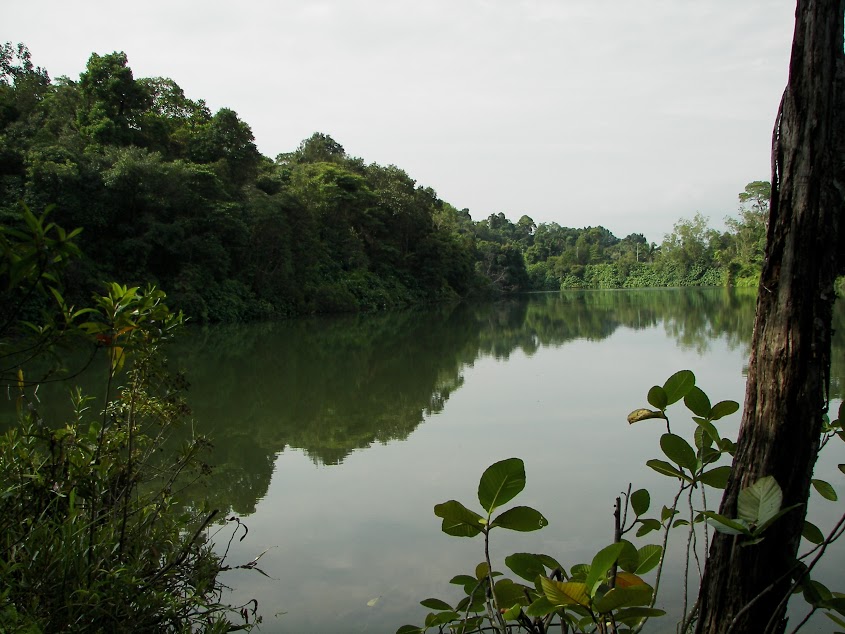Nature's Unifying Patterns
Detailed descriptions and examplesNature is resilient to disturbances.
Being resilient is about having the ability to recover after disturbances or significant, unpredictable changes in the local environment, such as those caused by a fire, flood, blizzard, or injury. Diversity, redundancy, decentralization, self-renewal, and self-repair can all enable resiliency in nature and the ability to maintain function despite a disturbance. At a systems level, “diversity” refers to the presence of multiple forms, processes, or systems that meet a functional need. Diversity can include a variety of behavioral, physical, or physiological responses to a change in the environment. “Redundancy” means that there’s more than one representative system, organism, or species that provides each function, and that there’s overlap so the loss of or decline in one representative doesn’t destroy the whole system. “Decentralization” means that the mechanisms maintaining those functions are scattered throughout the system, not located exclusively together, so that a localized disturbance doesn’t remove one or more vital parts of the whole system. “Self-renewal” and “self-repair” are terms that are more often applied at the cellular or organismal level, but self-renewal can also be applied in ecological contexts. For the former, the terms mean that organisms have the capacity to generate new cells, heal wounds and damaged organs, respond to bacterial and viral threats, and more.
Biology Examples

Young lodgepole pines growing around the burnt remains of the previous generation of trees.
Lodgepole pine
Large fires swept Yellowstone National Park, USA, in 1988. Afterward, the lodgepole pine forests were able to grow back because the pines have two types of cones: regular cones that open to release seeds in normal conditions and special serotinous cones that are sealed shut with a resin and open only when exposed to the high heat of a fire. This diversity of
cones provides options for reseeding, depending on conditions. Each tree also produces many cones and this redundancy ensures even though only a relatively small percentage of seeds sprout, the forest can still recover. If an area is burned beyond the point where serotinous cones survive, seeds from other forest stands nearby may also contribute to regeneration.

Kansas prairie
Prairie ecosystems
In a prairie ecosystem there is a diversity of plant species that serve different functions in the ecosystem, such as nitrogen fixation, water retention, and soil stabilization. Resilience is enhanced because this variety of plants is spread throughout the prairie and there are multiple representatives of each species and each functional group. Collectively, this diversity serves as a pest management system, since many pests are plant-specific and cannot spread as easily between plants in a diverse ecosystem. The plants’ abilities to survive different types of perturbations results in long-term survival of the ecosystem. In a drought, some species become more abundant while others become scarce. During wet years, this relationship switches. But the ecosystem still functions, providing ecological services.
Design Applications

Airplanes
Many of the functions performed by large airplanes are vital to proper functioning overall and thus to passenger safety. If planes and aviation personnel could not recover or compensate when vital functions were compromised, we would hear about a lot more plane crashes. Given the potential consequences, resiliency is built into the design of the airplane. For example, there are diverse operating mechanisms (e.g., electrical, mechanical, hydraulic, and pneumatic) for all critical functions (e.g., engines, landing gear, navigation). The manufacturers of the parts are all different, and there are at least three versions of each system, which are widely distributed throughout the plane. As such, catastrophic failure is usually avoided if there is a disturbance to one system because airplane manufacturers incorporate variation, redundancy, and decentralization into their designs.

A sample of self-healing concrete.
Self-healing concrete
Concrete is one of the most commonly used building materials, and it is prone to cracking. From large crack to very small hairline fractures, cracks weaken the structural integrity of concrete. Engineers have developed self-healing concrete by mixing bacteria into concrete to create a bio-concrete. The bacteria grow into cracks as they form, releasing calcium carbonate (similar to limestone) as a waste product, which fills the crack. This example is a combination of biomimicry―mimicking the self-healing processes of trees and other organisms―and the use of an organism to perform a function, in this case the bacteria.

The Upper Peirce Reservoir, one of the reservoirs located in Singapore’s Central Catchment Nature Reserve.
Singapore’s water system
Singapore is a densely populated island nation, that is vulnerable to having its water supply from the Malaysian mainland cut off by regional conflict. In response to this potential for sudden and catastrophic disruption, Singapore has developed a varied, redundant, and decentralized water supply system and a strategy that features conservation efforts to reduce demand, the desalinization of seawater, reclamation of wastewater to drinking water, and some piped water from the Malaysian mainland.
Image Credits
Kansas prairie: Eva Funderburgh CC-BY-NC
Lodgepole pine forest: Gayan Gunawardana CC-BY-NC-ND
Airplane: Strower CC-BY via Wikimedia
Self-healing concrete sample: UCL News CC-BY-ND
Upper Pierce reservoir: Public domain


